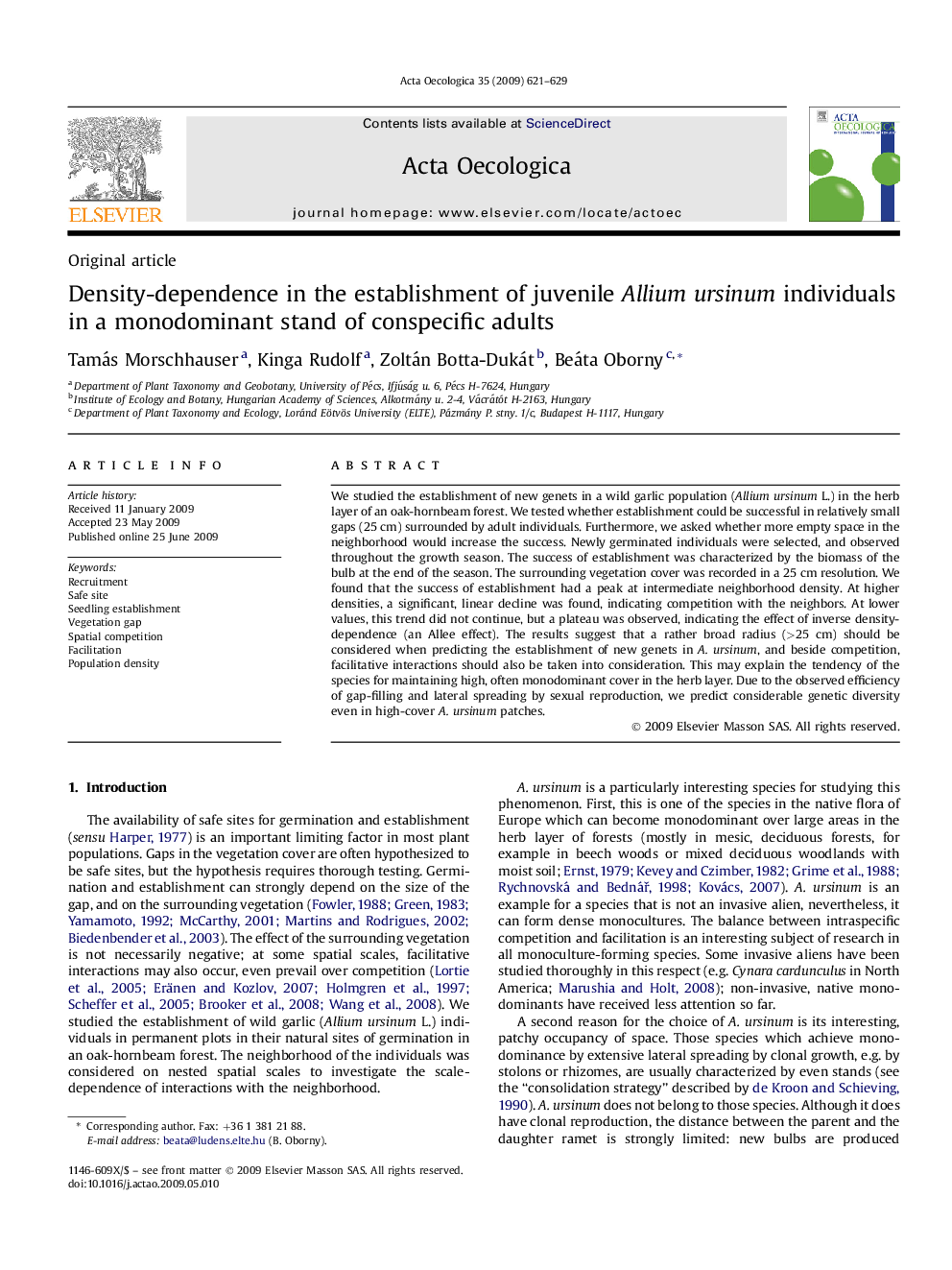| کد مقاله | کد نشریه | سال انتشار | مقاله انگلیسی | نسخه تمام متن |
|---|---|---|---|---|
| 4381426 | 1304071 | 2009 | 9 صفحه PDF | دانلود رایگان |

We studied the establishment of new genets in a wild garlic population (Allium ursinum L.) in the herb layer of an oak-hornbeam forest. We tested whether establishment could be successful in relatively small gaps (25 cm) surrounded by adult individuals. Furthermore, we asked whether more empty space in the neighborhood would increase the success. Newly germinated individuals were selected, and observed throughout the growth season. The success of establishment was characterized by the biomass of the bulb at the end of the season. The surrounding vegetation cover was recorded in a 25 cm resolution. We found that the success of establishment had a peak at intermediate neighborhood density. At higher densities, a significant, linear decline was found, indicating competition with the neighbors. At lower values, this trend did not continue, but a plateau was observed, indicating the effect of inverse density-dependence (an Allee effect). The results suggest that a rather broad radius (>25 cm) should be considered when predicting the establishment of new genets in A. ursinum, and beside competition, facilitative interactions should also be taken into consideration. This may explain the tendency of the species for maintaining high, often monodominant cover in the herb layer. Due to the observed efficiency of gap-filling and lateral spreading by sexual reproduction, we predict considerable genetic diversity even in high-cover A. ursinum patches.
Journal: Acta Oecologica - Volume 35, Issue 5, September–October 2009, Pages 621–629